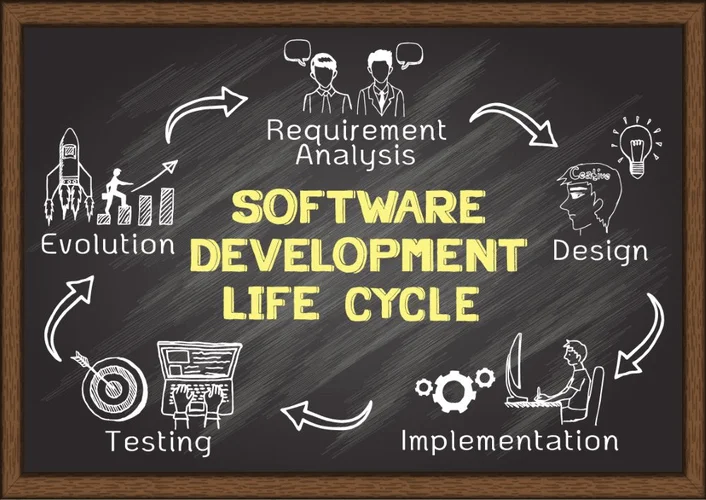
This rule says that about 80% of the problems are the outcome of 20% of causes. This rule can be referred to as the “vital few and trivial many.” Again, the idea is that you could focus on a vital few root causes of the issue and ignore the trivial many. Juran extended Pareto’s precept to the business world to find a way to understand whether or not the rule could be utilized to problems confronted by businesses. He noticed that in high quality management departments, most production defects resulted from a small percentage of the causes of all defects. So, by extension, 80% of the issues are brought on by 20% of the defects; Juran’s work implies that if you give attention to fixing that 20%, you can have a big effect with minimal effort.
The 80/20 rule can be utilized to strategically select the issues in a company to repair that can end in the most impact. It may help stimulate creative thought and arranged considering around business innovation or problem-solving. One necessary notice is that the 80/20 rule is solely a handy rule of thumb, not an actual ratio or law. We can see that the Pareto chart reveals several kinds of complaints with only a few responses.
One answer is to mix categories into an Other class, as proven in Figure 6. A Pareto chart, at its heart, is a column or bar chart overlaid with a line chart. The bars are displaying data that aligns to the left-hand scale, and the line AI engineers reveals the proportion of one thing on a scale up to 100 percent on the right-hand aspect.

While details about past errors or problems is beneficial, there’s no guarantee that it will be relevant in future scenarios. By making use of the rule, problems could be sorted based mostly on whether or not they affect income, customer complaints, technical issues, product defects, or delays and backlogs from missed deadlines. Each of these issues is given a ranking primarily based on the quantity of revenue or sales and time lost, or the variety of complaints received. The objective of a Pareto diagram is to separate the numerous features of an issue from the trivial ones. By graphically separating the aspects of a problem, a staff will know where to direct its enchancment efforts. Reducing the most important bars identified in the diagram will do more for total improvement than lowering the smaller ones.
The share curve represented by the road graph has a scale on the right-hand facet. The Pareto Principle can be utilized in a broad range of areas similar to manufacturing, management, and human resources. It means that the efforts of 20% of a company’s workers might drive 80% of the firm’s earnings. The Pareto Principle is much more applicable to companies which might be client-service based. It has been adopted by a variety of teaching and buyer relationship administration (CRM) software programs.
Essentially, Pareto famous that in lots of locations, the 80/20 distribution was frequent and existed in nearly every side of our lives. He found that 80 percent of Italy’s land was owned by 20 % of its population. Surveys across other countries revealed an identical distribution pattern.
Similarly, if 20% of your prospects drive 80% of your gross sales, you might wish to focus on those customers and reward them for his or her loyalty. In this sense, the Pareto Principle becomes a information for the way to allocate resources efficiently. A Pareto chart illustrates the Pareto principle by mapping frequency, with the belief that the extra frequently something happens, the more impact it has on outcome. In 1906, Pareto famous that 20 % of the inhabitants in Italy owned 80 percent of the property. He proposed that this ratio could be discovered many locations in the physical world and theorized it’d indicate a pure law. The Pareto precept, also called the 80/20 rule, is a concept sustaining that 80 p.c of the output from a given situation or system is determined by 20 % of the input.
Repeat analyses are useful when enchancment exercise is underway and efficiency information is altering over time. Depending on the cycle of data collection—hourly, every day, weekly, monthly, quarterly, or other—repeated Pareto analyses assist to monitor the improvements made to the system producing the info. While you can see defects and problems, Pareto charts can also be used to identify strengths.
The company should focus its resources on these five causes to make the most impactful positive change to its supply processes. It’s necessary to notice that Pareto analysis doesn’t present options to points, but only helps businesses to determine and slender down probably the most important causes of the majority of their issues. Once the causes have been identified, the company must then create methods to handle these issues. In probably the most common sense, the benefit of Pareto evaluation is that it helps to establish and determine the foundation causes of defects or issues. It additionally helps to save lots of time by focusing on the root causes of the problem at hand.
It’s primarily based on the Pareto principle, which is that 80 % of outcomes come up from 20 percent of causes. Advisory practices which have adopted the Pareto Principle have seen improvement in time management, productivity, and total shopper satisfaction. In the 1940s, Pareto’s principle was advanced by Dr. Joseph Juran, an American electrical engineer who’s broadly credited with being the daddy of quality management. Pareto evaluation is used to establish issues or strengths inside a company. Pareto analysis will typically show that a disproportionate enchancment can be achieved by rating numerous causes of a problem and by concentrating on those solutions or gadgets with the biggest impression. The fundamental premise is that not all inputs have the identical or even proportional impact on a given output.

For instance, 30% of the workforce (or 30 out of 100 workers) may only complete 60% of the output. The remaining workers may not be as productive or may just be slacking off on the job. This further reiterates that the Pareto Principle is merely an observation and not essentially a law.
However, not every client offers the same amount of revenue to the advisor. If an advisory apply has a hundred clients, according to the Pareto Principle, 80% of the financial advisor’s revenue should come from the highest 20 shoppers. These 20 clients have the very best quantity of belongings and the best charges charged. The principle has also led to advisors focusing on replicating the top 20% of their clients, figuring out that including a shopper of that dimension immediately affects the underside line. While the 80/20 break up is true for Pareto’s observation, that doesn’t necessarily mean that it’s all the time true. That’s as a result of it is based on anecdotal proof quite than scientific evaluation.

The firm undertakes an evaluation to track how many cases of every purpose happen. Pareto efficiency is a state of the financial system the place assets can’t be reallocated to provide extra advantages for one particular person with out making no much less than one individual worse off. Pareto effectivity implies that assets are allotted in the most economically environment friendly method. Pareto evaluation exhibits that disproportionate enchancment can be achieved by ranking varied causes of an issue and concentrating on the options with the largest impression.
A vertical bar graph is a kind of graph that visually shows information using vertical bars going up from the underside. In a vertical bar graph, the lengths are proportional to the quantities they represent. Vertical bar graphs are sometimes utilized when one axis can’t have a numerical scale. Due to time, the objectives normally are not to eliminate or maximize however rather to optimize. Hence, companies can resolve defects or errors with the very best precedence first. You can now analyze a Pareto chart by figuring out those gadgets that seem to account for a lot of the difficulty.

Pareto evaluation provides several benefits, relying on what specific type of project it’s being used for. From a business strategy perspective, those two issues must be addressed first to attain maximum impression. Judging by the comments, we are ready to assume that hiring more employees and/or coaching them higher would be the best course of action.
Pareto charts make sense for information with counts for values of a nominal variable. Pareto charts aren’t a good choice for information that have values for a steady variable. When a variable has many classes, the Pareto chart might become too broad for useful visualization.
A Pareto chart is totally different from a vertical bar graph because the bars are positioned in order of lowering top, with the tallest bar on the left. Caution is in order for users of Pareto analysis who have not monitored the systems they are finding out for stability. A wildly fluctuating system will produce inconsistent Pareto rankings that may lead to misjudgments. Repeated Pareto analyses might help to confirm rankings, however the best protection towards being misled is to first use a management chart to inform if the system is secure and predictable. A different color is used for the last bar that combines a number of causes into the Other class. When combining categories, one of the best follow is to place the combined class because the final bar.

All rights are reserved, together with those for textual content and data mining, AI coaching, and related applied sciences. For all open entry content material, the Creative Commons licensing terms apply. The Pareto chart for the audit findings in Figure 1 above confirmed the essential outcomes. To assist make selections, you probably can add a note to the chart as proven in Figure three below. Add Pareto analysis to considered one of your lists under, or create a brand new one.
The chart is named for the Pareto principle, which, in flip, derives its name from Vilfredo Pareto, a noted Italian economist. Pareto evaluation is a method used for enterprise determination making, however it additionally has purposes in a quantity of totally different fields from welfare economics to quality management. A common part of such evaluation is to graphically depict the incidence of every variable being tracked. The Pareto Principle is a concept that implies that 80% of the top outcomes of an action are due to 20% of causes. In enterprise and finance, the principle is used to discover out which inputs are probably the most profitable and productive.